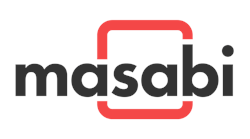Despite a marked global population shift towards urban areas, many cities have actually seen a decrease in public transit ridership. Public transit will remain essential for moving people quickly and efficiently in our cities, and its importance will only increase with the population influx. To keep up with emerging forms of transportation and increase ridership, cities must embrace innovative solutions that will provide similar customer experiences and ease of use as private transportation options like taxi hailing or ride sharing apps.
Within city ecosystems across North America innovative digital services such as journey planners, mobile ticketing, bike schemes, parking and ride hailing apps are available to assist citizens and make it easier to access city services and public transit. However, when agencies look to integrate these services and apps, funded by different departments and provided by several service providers, they are faced with a problem; How do they get all these services behind a single interface when no single technology provider can be an expert in all areas for all cities’ differing needs?
A software development kit (or SDK) is one solution that is changing how public transit apps connect and vastly improving rider’s experiences as they interact with various systems via their smartphone.
What is an SDK?
For the uninitiated, a software development kit is a piece of code that allows a set of functionalities from one service provider to be embedded into a new or existing application from another provider. This in itself is not that interesting, but what this means for the transit experience is. By integrating via SDK, best-of-breed transit services can be connected within one or more central apps for a seamless and optimized rider experience. Crucially, options for how and where you choose to access services can also be greatly increased.
Any centralized citizen support app can choose to integrate a series of SDK’s most appropriate for that city or user group, with apps designed for tourists or the disabled having a different user experience compared to those for regular commuters. It also enables citizen support apps to include the city-specific parking, rideshare and transit ticketing links for that area, without forcing the city to use a monolithic non-specialist provider for all of its underlying services.
To give an example, Masabi deployed the first mobile ticketing SDK integration for public transit this year in France in partnership with Keolis, allowing ticket purchasing, delivery, storage and usage technology to be integrated directly into an existing smart journey planning application. This development is interesting as it means that tickets can now be purchased and displayed in a wide range of transit applications, integrating best-of-breed services for a seamless rider experience. It also enables choice for how riders access and discover transit. A mobile ticketing application may well be the best way for regular riders to purchase and use tickets, but what about visitors that need more journey planning and support? By integrating ticketing into other apps via an SDK, you offer choice of access to transit services through whatever application is appropriate in a city ecosystem.
SDKs are not a new phenomenon. Other leading examples of the technology in the transit space include the ability to request an Uber directly from the Google Maps app while planning a trip, or hire a bike via the Transit App. What’s the common theme among these examples? A seamless and consolidated experience for the user. For this reason, how SDKs can link services together and improve the rider experience must be understood by transit agencies, operators, cities and companies developing mobile apps in the space. The more the rider experience can be directly integrated into everyday, familiar experiences, the more likely it will be that consumers use transit services.
The Benefits of SDK Integration for Public Transit Services
Creating a seamless user experience by connecting applications that riders already use with complementary transit services, is just one of the benefits an SDK integration enables. This type of approach also allows transit agencies and cities to incorporate best-of-breed solutions from other apps into their current offering, rather than needing to develop proprietary software. It gives agencies all the necessary tools to bring new functionality to apps that were already deployed for other transit purposes or by other third parties. This also means that as the SDK provider upgrades its software, the functions embedded in the app are automatically upgraded as well, offering customers access to the latest and best technology and taking the onus for providing it away from the agency.
Previously, when companies and cities were looking to develop a single transit application with multiple functionalities they were left with the choice of either a provider who supplies multiple services — but none of them exceptionally well — or a custom bespoke project that was cost prohibitive and difficult to build, manage and maintain. Now, with SDKs, cities are able to build a central application and integrate best-of-breed services from relevant expert service providers. This approach is cost effective, far easier to manage and allows best of breed technology to integrate into a single app.
By integrating features like ticketing and ride-hailing into other apps, you offer greater choice by making it easier to access transit services through whatever application is appropriate for a city ecosystem or rider, be that a market leading journey planning application, city bike scheme or messenger app. Providing more accessibility will only help increase usage and draw more riders to use transit services, and that is something I think we can all get onboard with.




